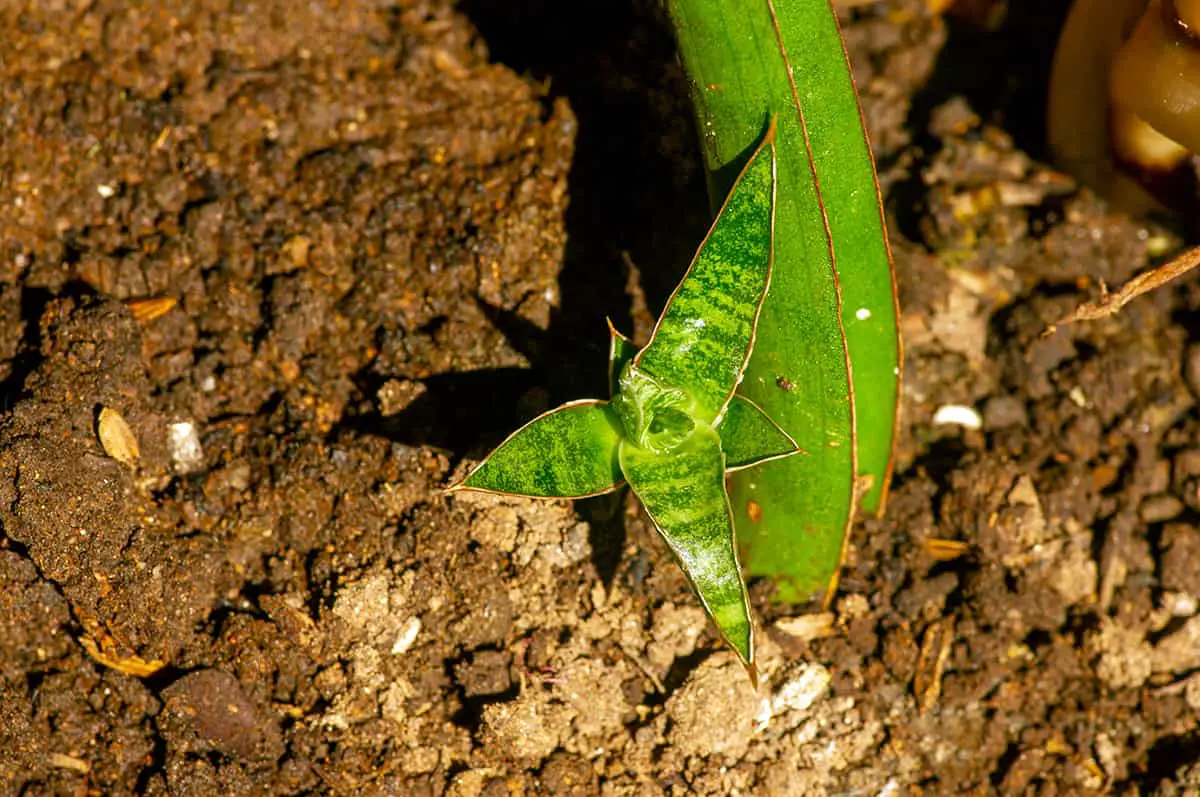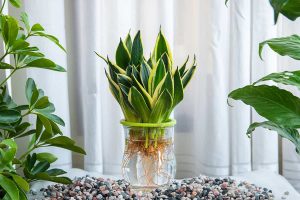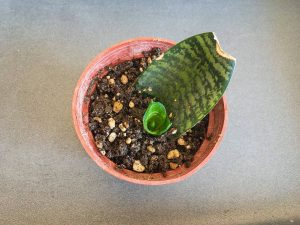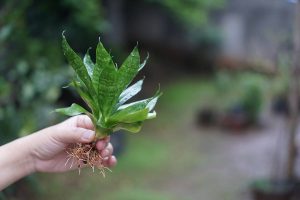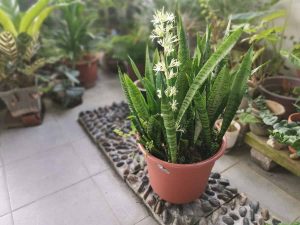When it comes to snake plants, fertilizer can be a controversial issue. Here we look at the risks and benefits associated with fertilizer use and which types of fertilizers are best for snake plants.
Table of Contents
Do Snake Plants Need Fertilizer?
Snake plants are very low-maintenance plants that don’t require much attention, and this is one of the things that makes them so popular. Among their easy-care qualities is the fact that they don’t need fertilizer.
Snake plants are native to the rocky, infertile ground in West Africa, so they are accustomed to growing with very limited amounts of nutrients. The result of this is that they will do just fine without any fertilizer at all in most instances.
If you are a busy or forgetful plant parent, this is good news because you don’t need to remember to feed fertilizer to your snake plants.
The only time your snake plants might need fertilizer is if they aren’t doing so well. For example, if they are recovering from a disease or a pest infestation, or they have recently been subjected to a very long drought, then a dose of fertilizer can help to perk them up and recover more quickly.
Can You Fertilize Snake Plants?
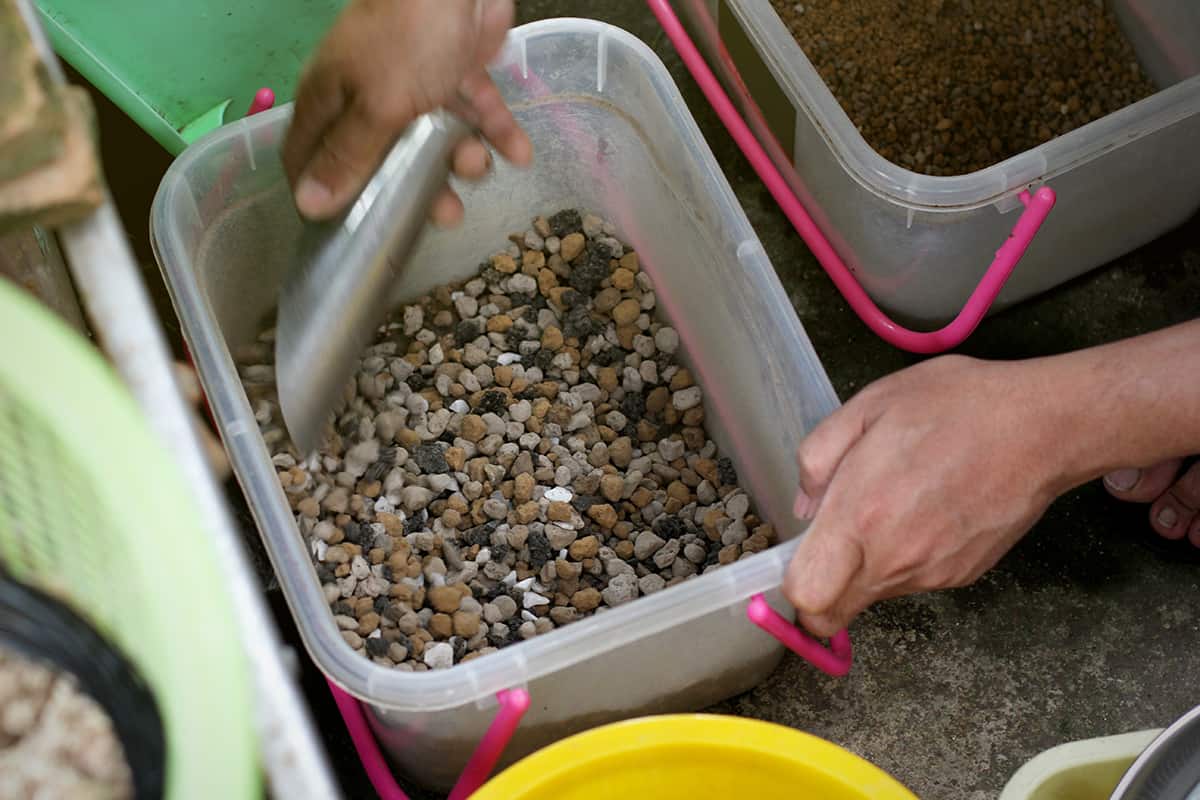
Although fertilizer is not a necessity for houseplants, that doesn’t mean that you can’t feed them. Some plant owners take a lot of joy in tending to their plants and ensuring that they thrive as much as possible, and if this is the case, then there are ways you can incorporate fertilizer into your snake plant care regime.
Risks of Using Fertilizer on Snake Plants
Many snake plant care guides recommend that fertilizer is avoided, and there is a good reason for this. In the event that your snake plants get fertilized too heavily, it can actually kill the plant, so some people find that this risk outweighs the potential benefits of fertilizer.
Fertilizer burn
The biggest risk of using fertilizer on a snake plant is that the plant suffers from fertilizer burn. Fertilizer burn can happen to any plant when it receives too much fertilizer, but snake plants are more susceptible to it because they have such low nutrient needs.
Symptoms of fertilizer burn can include a number of things, including yellow or brown leaves, brown tips, wilting leaves, stunted growth, and dried-out foliage.
Too much fertilizer can actually burn the roots of a snake plant, which can cause it to die. Even if the snake plant does not die from fertilizer burn, excessive use of fertilizer can weaken the plant and make it more susceptible to disease and pest infestations.
Fertilizers are also heavy in salt, and when salt builds up in the soil, it can make it difficult for the roots to absorb moisture.
If you suspect your snake plant has been overfertilized, you should repot it in fresh soil and refrain from using fertilizer, or attempt to flush out the fertilizer by running the plant under a tap.
Benefits of Using Fertilizer on Snake Plants
While overuse of fertilizer is detrimental to snake plants, it can offer many benefits if you use it cautiously.
Faster growth
Snake plants are renowned for their slow growth habit, and this can be frustrating for impatient plant owners who love to watch their houseplants shoot up. Snake plants kept in shade will be particularly slow growing. If you want to give your snake plant a helping hand, an infrequent dose of fertilizer can help boost growth.
Vivid color
Many snake plants, such as the Black Gold Snake Plant and the Moonshine Snake Plant, feature beautiful foliage colors. If the coloring of your snake plant is looking a little dull, then a small amount of fertilizer can help to make the foliage more vivid.
Shiny foliage
Snake plants tend to fare very well on a limited amount of nutrients, but if your snake plant has been in the same soil for many years, then it may have exhausted all of the available nutrients and be starting to look a little drab.
Fertilizer can help a sad-looking snake plant spring back to life with lush, shiny foliage.
Best Types of Fertilizer for Snake Plants
There is such a huge selection of fertilizers available that it can be confusing to know which one is best for your snake plant. The key here is to find a fertilizer that is not highly concentrated because this is where you can run into problems with fertilizer burn.
Here we look at the types of fertilizers on the market and which ones are best suited to use with a snake plant.
Organic fertilizers
Organic fertilizers are the product of animals and plants, which makes them natural. These typically contain lower levels of nutrients compared with synthetic fertilizers, which can make them a better choice for snake plants which can suffer from over-fertilization.
Examples of organic fertilizers include chicken manure, seaweed, bone meal, and egg shells. These types of fertilizers are readily available, and they are a good choice if you prefer to avoid chemicals.
Alternatively, you can make your own organic fertilizer, for example, by saving eggshells from used eggs and crushing them before adding them to your plant’s soil. Organic fertilizers tend to be slow-release, which also helps prevent fertilizer burn.
Synthetic fertilizers
These types of fertilizers are man-made and artificial. They are generally much more concentrated than organic fertilizers, and you will see faster, more obvious results with synthetic fertilizers.
You can use synthetic fertilizer on snake plants, just be sure to use one specifically intended for succulents, or make sure you dilute it and use it sparingly.
Specific Snake Plant Fertilizers
As snake plants have rocketed in popularity as houseplants, some fertilizer manufacturers have filled a gap in the market by creating fertilizer specifically designed to be used on snake plants.
You can also find succulent-specific fertilizers which have been formulated to suit the needs of succulents, and as snake plants are a type of succulent, these are also suitable. These fertilizers include:
Perfect Plants Liquid Snake Plant Fertilizer | 8oz
This is a concentrated liquid fertilizer specially formulated for snake plants. Add a small amount to the water when you water your plants, according to the ratio listed on the bottle, and use it once a month throughout the growing period.
Farmer’s Secret – Snake Plant Liquid Plant Food
This fertilizer is formulated with NPK at a ratio of 6:5:3, designed to strengthen roots and improve foliage growth. It is a concentrated fertilizer that should not be applied directly to the plant but instead diluted in water and given to the plant during watering.
The ratio for dilution is half a teaspoon of fertilizer to one gallon of water. The low nutrient levels of this fertilizer mean that it can be fed to plants weekly throughout the growing period but should not be given from September through to May when the plant needs to rest.
Jessi Mae – Indoor Plant Food
This is a houseplant food that has been designed for use on snake plants, peace lilies, and fiddle leaf figs, among others. It has a balanced nutrient ratio of 1:1:1 NPK and comes in a handy pump bottle for easy application.
This fertilizer does not need to be directly diluted in water; instead, you should pump one or two sprays onto the soil once a month immediately before watering. When you add water, this will help the fertilizer to be distributed throughout the soil.
The Grow Co- Succulents & Cactus Plant Food
This fertilizer comes in pellet form, which can be applied directly onto the soil of the plant. Sprinkle it on the soil surface or poke holes into the soil and insert pellets to distribute it throughout the soil.
This offers an alternative to liquid fertilizers, which need to be diluted with water because snake plants are not thirsty and, therefore, often don’t need to be watered, which prevents the opportunity for feeding.
These fertilizer pellets can instead be used at any time, with or without water. They have a low NPK ratio of 1:1:1, and give plants a slow release of nutrients for stronger roots, more vibrant color, and more foliage growth.
One portion of these fertilizer pellets will be sufficient to feed the plant for nine months. Apply a quarter teaspoon of pellets for every 2 inches of pot width, and then don’t worry about feeding the snake plant again until the following year.
Jobe’s 06703 Succulent Fertilizer Spikes
This is an all-natural fertilizer with an NPK ratio of 2:8:8. It is made from a feather meal and bone meal and is designed specifically for succulent plants. It is sold in spikes, which you insert directly into the soil and leave there.
The number of spikes you need to use at one time will depend on the size of the pot. A 4-inch pot will need 1 spike, an 8-inch pot will need two spikes, and so on. This is a no-fuss application method, with each spike lasting for a year after insertion.
